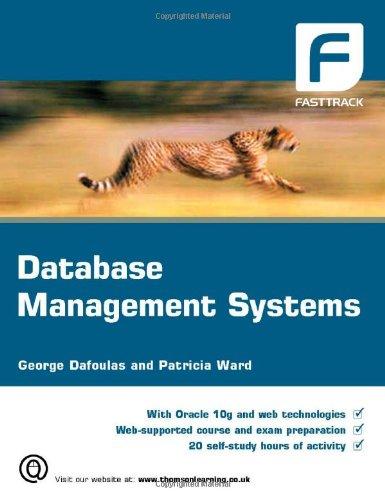Question
interval_map is a data structure that efficiently associates intervals of keys of type K with values of type V. Your task is to implement the
interval_map
interval_map
Each key-value-pair (k,v) in the m_map member means that the value v is associated to the interval from k (including) to the next key (excluding) in m_map.
Example: the std::map (0,'A'), (3,'B'), (5,'A') represents the mapping
0 -> 'A'
1 -> 'A'
2 -> 'A'
3 -> 'B'
4 -> 'B'
5 -> 'A'
6 -> 'A'
7 -> 'A'
... all the way to numeric_limits
The representation in m_map must be canonical, that is, consecutive map entries must not have the same value: ..., (0,'A'), (3,'A'), ... is not allowed. Initially, the whole range of K is associated with a given initial value, passed to the constructor.
Key type K
besides being copyable and assignable, is less-than comparable via operator<
is bounded below, with the lowest value being std::numeric_limits
does not implement any other operations, in particular no equality comparison or arithmetic operators
Value type V
besides being copyable and assignable, is equality-comparable via operator==
does not implement any other operations
You are given the following source code:
#include
#include
#include
template
class interval_map {
friend void IntervalMapTest();
private:
std::map
public:
// constructor associates whole range of K with val by inserting (K_min, val)
// into the map
interval_map(V const& val) {
m_map.insert(m_map.begin(), std::make_pair(std::numeric_limits
}
// Assign value val to interval [keyBegin, keyEnd).
// Overwrite previous values in this interval.
// Do not change values outside this interval.
// Conforming to the C++ Standard Library conventions, the interval
// includes keyBegin, but excludes keyEnd.
// If !( keyBegin < keyEnd ), this designates an empty interval,
// and assign must do nothing.
void assign(K const& keyBegin, K const& keyEnd, V const& val) {
// INSERT YOUR SOLUTION HERE
}
// look-up of the value associated with key
V const& operator[](K const& key) const {
return (--m_map.upper_bound(key))->second;
}
};
void IntervalMapTest()
{
// INSERT YOUR SOLUTION HERE
}
// Many solutions we receive are incorrect. Consider using a randomized test
// to discover the cases that your implementation does not handle correctly.
// We recommend to implement a function IntervalMapTest() here that tests the
// functionality of the interval_map, for example using a map of unsigned int
// intervals to char.
int main() {
IntervalMapTest();
// INSERT YOUR SOLUTION HERE
}
Step by Step Solution
There are 3 Steps involved in it
Step: 1

Get Instant Access to Expert-Tailored Solutions
See step-by-step solutions with expert insights and AI powered tools for academic success
Step: 2

Step: 3

Ace Your Homework with AI
Get the answers you need in no time with our AI-driven, step-by-step assistance
Get Started


